Audi Q3 VS Fiat Panda – Specs, Efficiency & Price Comparison
Which model is the better choice – the Audi Q3 or the Fiat Panda? We compare performance (245 HP vs 70 HP), boot capacity (530 L vs 225 L), efficiency (5.50 L vs 5 L), and of course, the price (33700 £ vs 14100 £).
Find out now which car fits your needs better!
The Audi Q3 (SUV) is powered by a Petrol or Diesel engine and comes with a Manuel or Automatic transmission. In comparison, the Fiat Panda (Hatchback) features a Petrol MHEV engine and a Manuel gearbox.
When it comes to boot capacity, the Audi Q3 offers 530 L, while the Fiat Panda provides 225 L – depending on what matters most to you. If you’re looking for more power, you’ll need to decide whether the 245 HP of the Audi Q3 or the 70 HP of the Fiat Panda suits your needs better.
There are also differences in efficiency: 5.50 L vs 5 L. In terms of price, the Audi Q3 starts at 33700 £, while the Fiat Panda is available from 14100 £.
Compare all the key specs now and find out which model fits your lifestyle best!
Audi Q3
The Audi Q3 seamlessly blends practicality with luxury, making it an ideal choice for urban dwellers and adventure seekers alike. With its striking design and sophisticated interior, the Q3 offers a premium driving experience that caters to both comfort and style. As a compact SUV, it effortlessly navigates through city streets while providing ample space for passengers and cargo.
details @ audi-mediacenter.com
@ audi-mediacenter.com
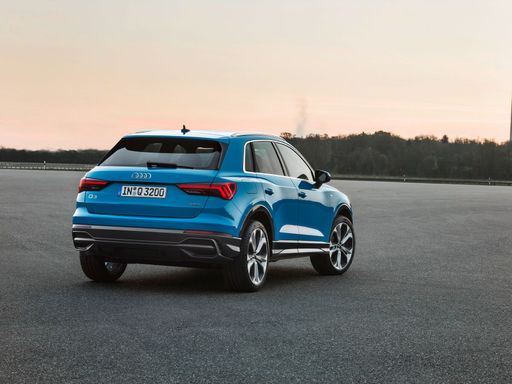 @ audi-mediacenter.com
@ audi-mediacenter.com
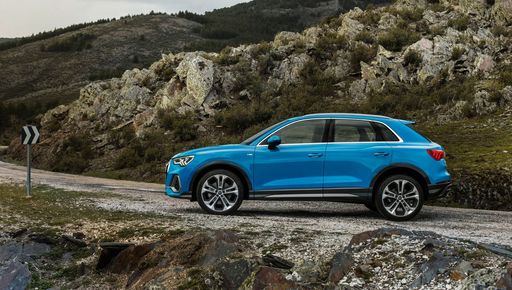 @ audi-mediacenter.com
@ audi-mediacenter.com
 @ audi-mediacenter.com
@ audi-mediacenter.com
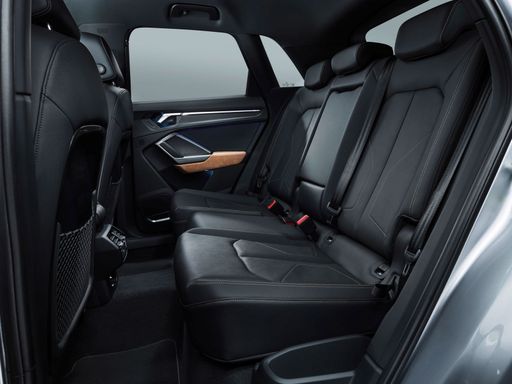 @ audi-mediacenter.com
@ audi-mediacenter.com
Fiat Panda
The Fiat Panda is a compact city car that brilliantly combines practical design and efficient functionality. Its boxy shape provides ample interior space and visibility, making it a favourite among urban drivers. With its reputation for reliability and affordability, the Panda continues to be a top choice for those seeking a no-frills, dependable vehicle.
details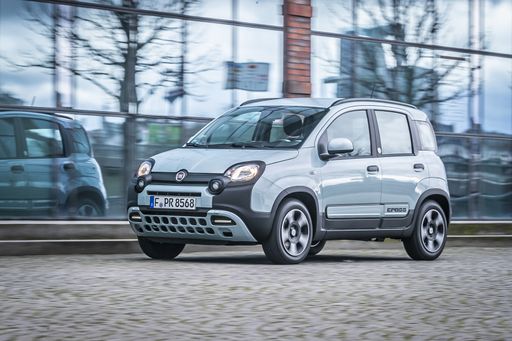 @ media.stellantis.com
@ media.stellantis.com
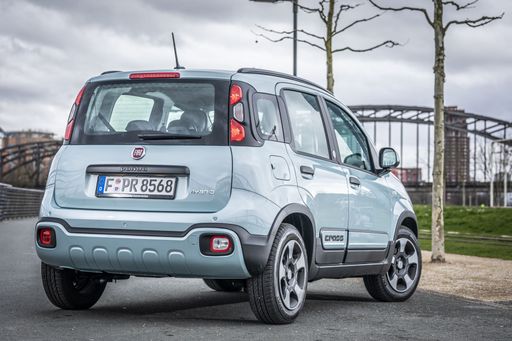 @ media.stellantis.com
@ media.stellantis.com
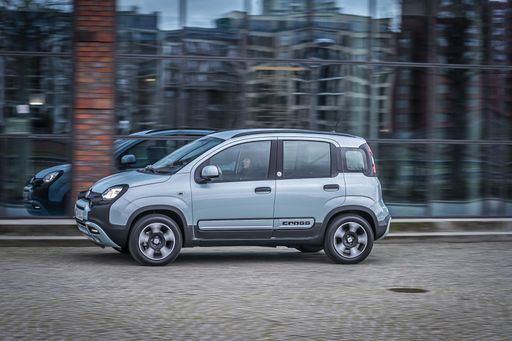 @ media.stellantis.com
@ media.stellantis.com
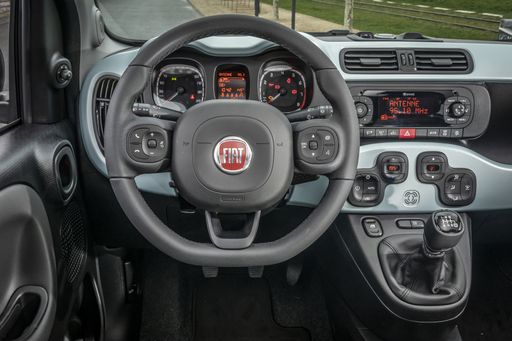 @ media.stellantis.com
@ media.stellantis.com

|

|
|
|
|
Costs and Consumption |
|
|---|---|
|
Price
33700 - 46100 £
|
Price
14100 - 17100 £
|
|
Consumption L/100km
5.5 - 8.5 L
|
Consumption L/100km
5 - 5.1 L
|
|
Consumption kWh/100km
-
|
Consumption kWh/100km
-
|
|
Electric Range
-
|
Electric Range
-
|
|
Battery Capacity
-
|
Battery Capacity
-
|
|
co2
143 - 193 g/km
|
co2
113 - 116 g/km
|
|
Fuel tank capacity
58 - 60 L
|
Fuel tank capacity
38 L
|
Dimensions and Body |
|
|---|---|
|
Body Type
SUV
|
Body Type
Hatchback
|
|
Seats
5
|
Seats
4 - 5
|
|
Doors
5
|
Doors
5
|
|
Curb weight
1525 - 1735 kg
|
Curb weight
1055 kg
|
|
Trunk capacity
530 L
|
Trunk capacity
225 L
|
|
Length
4484 - 4500 mm
|
Length
3635 - 3705 mm
|
|
Width
1843 - 1849 mm
|
Width
1643 - 1662 mm
|
|
Height
1567 - 1585 mm
|
Height
1551 - 1657 mm
|
|
Payload
455 - 495 kg
|
Payload
365 - 385 kg
|
Engine and Performance |
|
|---|---|
|
Engine Type
Petrol, Diesel
|
Engine Type
Petrol MHEV
|
|
Transmission
Manuel, Automatic
|
Transmission
Manuel
|
|
Transmission Detail
Schaltgetriebe, Automat. Schaltgetriebe (Doppelkupplung)
|
Transmission Detail
Schaltgetriebe
|
|
Drive Type
Front-Wheel Drive, All-Wheel Drive
|
Drive Type
Front-Wheel Drive
|
|
Power HP
150 - 245 HP
|
Power HP
70 HP
|
|
Acceleration 0-100km/h
5.8 - 9.5 s
|
Acceleration 0-100km/h
13.9 - 14.7 s
|
|
Max Speed
200 - 237 km/h
|
Max Speed
155 - 164 km/h
|
|
Torque
250 - 400 Nm
|
Torque
92 Nm
|
|
Number of Cylinders
4
|
Number of Cylinders
3
|
|
Power kW
110 - 180 kW
|
Power kW
51 kW
|
|
Engine capacity
1498 - 1984 cm3
|
Engine capacity
999 cm3
|
General |
|
|---|---|
|
Model Year
2024
|
Model Year
2024
|
|
CO2 Efficiency Class
E, F, G
|
CO2 Efficiency Class
C, D
|
|
Brand
Audi
|
Brand
Fiat
|
Audi Q3
The Audi Q3 stands as a prime example of what modern compact SUVs can achieve, combining dynamic performance with cutting-edge technology and refined luxury. This versatile vehicle caters to a diverse audience, offering a range of engine options and innovative features that elevate the driving experience.
Engine Performance and Efficiency
The Audi Q3 impresses with its selection of powertrains, particularly the 2.0-litre turbocharged engines which are available in both petrol and diesel variants. With power outputs ranging from 150 PS to 245 PS, there's a model to suit varying performance needs.
Efficiency is also a highlight, with diesel variants achieving impressive fuel consumption figures as low as 5.5 L/100km. In contrast, petrol options balance power and economy, maintaining competitive consumption levels. Such efficiency is complemented by low CO2 emissions, making the Q3 a smart choice for eco-conscious drivers.
Transmission and Drive Options
Transmission options for the Audi Q3 include both manual and automatic gearboxes, including Audi’s advanced seven-speed S tronic dual-clutch transmission. This allows for swift gear changes and enhances driving dynamics. All-wheel drive is available on select models, providing superior traction and stability, especially in adverse weather conditions.
Technological Innovations
Stepping inside the Audi Q3 reveals a meticulously designed cabin outfitted with the latest technology. The Virtual Cockpit, a fully digital driver display, allows for extensive customisation of vehicle information. The infotainment system also integrates seamlessly with smartphone applications through Apple CarPlay and Android Auto, ensuring connectivity on the go.
Moreover, safety features like adaptive cruise control, lane assist, and a 360-degree camera add a layer of confidence for the driver, making every journey more secure.
Comfort and Space
Space is a defining characteristic of the Q3, which comfortably seats five passengers. The vehicle offers a generous boot capacity of 530 litres, making it practical for both daily commutes and weekend adventures. Additionally, the interior design exudes sophistication with premium materials and ambient lighting, creating an inviting atmosphere.
Pricing and Market Position
Starting at competitive pricing within its class, the Audi Q3 offers outstanding value, considering its extensive list of features and luxurious feel. Prices ranging from approximately €38,300 to €52,750 ensure that there's a model suited for various budgets, appealing to both entry-level buyers and those looking for top-tier specifications.
Conclusion
In summary, the Audi Q3 combines performance, technology, and luxury in a compact SUV design. With a variety of engine choices, advanced safety features, and a spacious interior, it caters to the needs of modern drivers. Whether you are navigating city streets or exploring the great outdoors, the Q3 proves to be an exceptional companion on the road.
Fiat Panda
A Renaissance on Wheels: The Fiat Panda
The Fiat Panda, with its unmistakable charm and practicality, has long been a fixture in the compact car segment. In 2024, Fiat has again managed to reinvent this beloved model, introducing innovative features and cutting-edge technology. Let's delve into what makes the new Fiat Panda a formidable player in the world of urban mobility.
Sleek Design and Practical Dimensions
The Fiat Panda retains its iconic tall and boxy silhouette, ideal for urban environments. Measuring between 3653 mm and 3705 mm in length, and with a width range of 1643 mm to 1662 mm, it's compact enough for tight city streets yet Spacious enough to ensure comfort. The height varies between 1551 mm and 1657 mm, offering a commanding view of the road and easy ingress and egress—the Panda's ample boot space of 225 litres and its versatile five-door configuration further boast its practical nature.
Powertrain Innovations
Under the bonnet, the Fiat Panda houses a 1.0 GSE Hybrid engine. This mild-hybrid petrol engine is designed to enhance fuel efficiency and reduce emissions. Delivering 70 PS (51 kW), this engine is a testament to Fiat's dedication to marrying performance with eco-friendliness. The innovative three-cylinder engine offers a torque of 92 Nm, providing sufficient power for urban and suburban driving. With a CO2 emission rating of 113 to 116 g/km, it occupies the C to D CO2-efficiency class range.
Performance that Suits Urban Life
The Panda excels in urban driveability, offering a top speed between 155 km/h and 164 km/h. The acceleration from 0 to 100 km/h takes between 13.9 and 14.7 seconds, making it spirited enough for daily commuting while ensuring optimal fuel economy, with a consumption of 5 - 5.1 L/100km. Such statistics highlight its balance of performance and efficiency, echoing Fiat's commitment to practical performance.
Interior, Comfort, and Connectivity
Inside, the Fiat Panda exudes a blend of comfort and modern technology. It caters to four to five passengers comfortably, offering a thoughtfully designed interior to enhance the user experience. Features such as user-friendly controls, a well-organised dashboard, and optional infotainment systems keep the Panda competitively modern in its segment.
Safety and Technology
The Fiat Panda is equipped with various safety features, designed with urban journeys in mind. It offers technologies such as traction control and hill-hold assist, catering to the demanding stop-and-go nature of city driving. The enduring charm of the Fiat Panda is bolstered by its underappreciated technological sophistication, ensuring that every journey is as safe as it is enjoyable.
Affordability and Value
With a price range from €15,990 to €19,290, the Fiat Panda remains an excellent value proposition. It is cost-effective, economical to run, and backed by Fiat’s reputation for reliability, making it a prudent choice for customers looking to balance style, efficiency, and value.
The Fiat Panda of 2024 stands as a testament to Fiat’s ingenuity, maintaining its reputation for practicality while embracing modern efficiency and innovation. Whether for the daily commute or a spontaneous adventure, the Panda continues to deliver a driving experience that is both enjoyable and efficient.
The prices and data displayed are estimates based on German list prices and may vary by country. This information is not legally binding.
